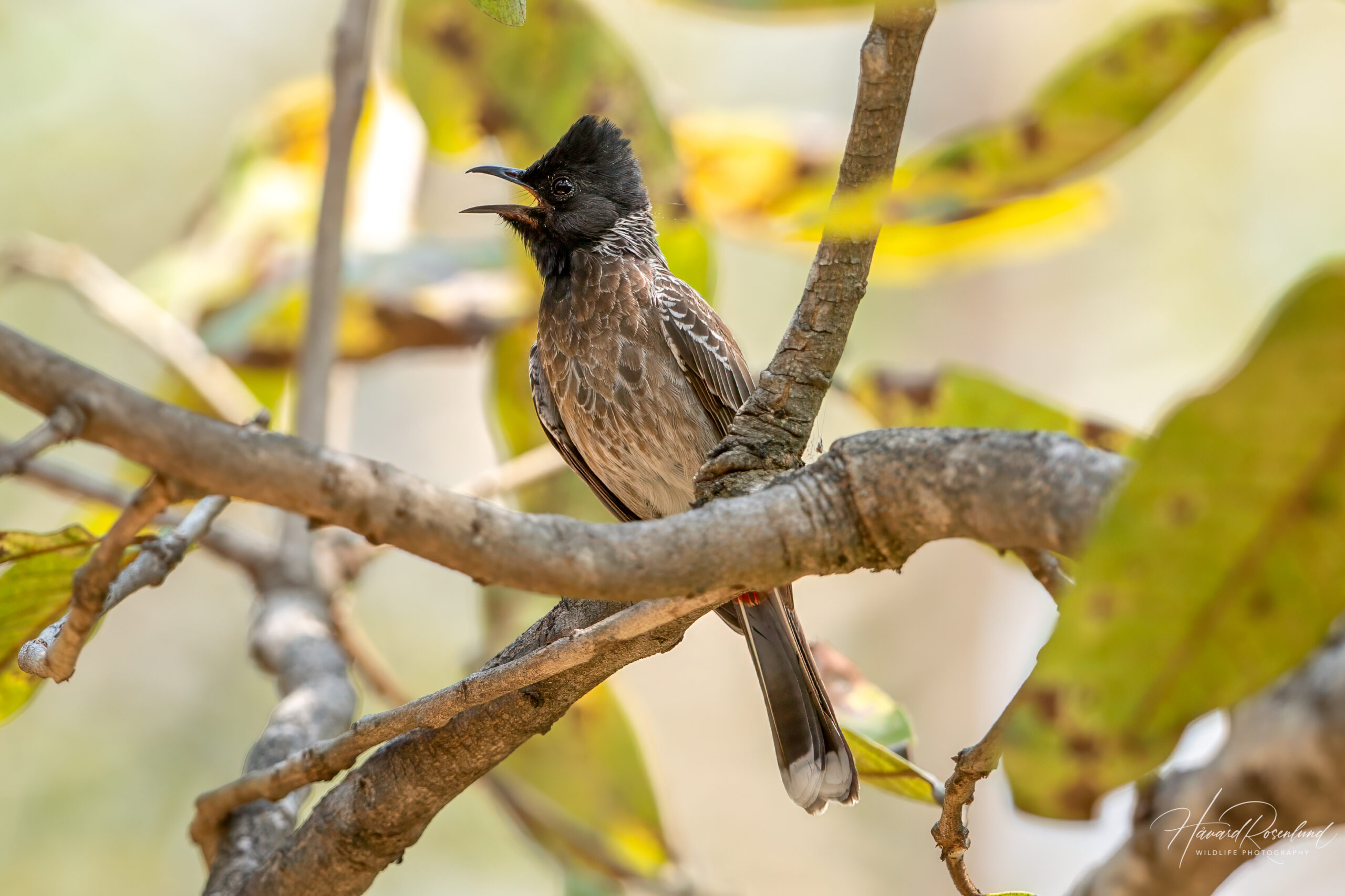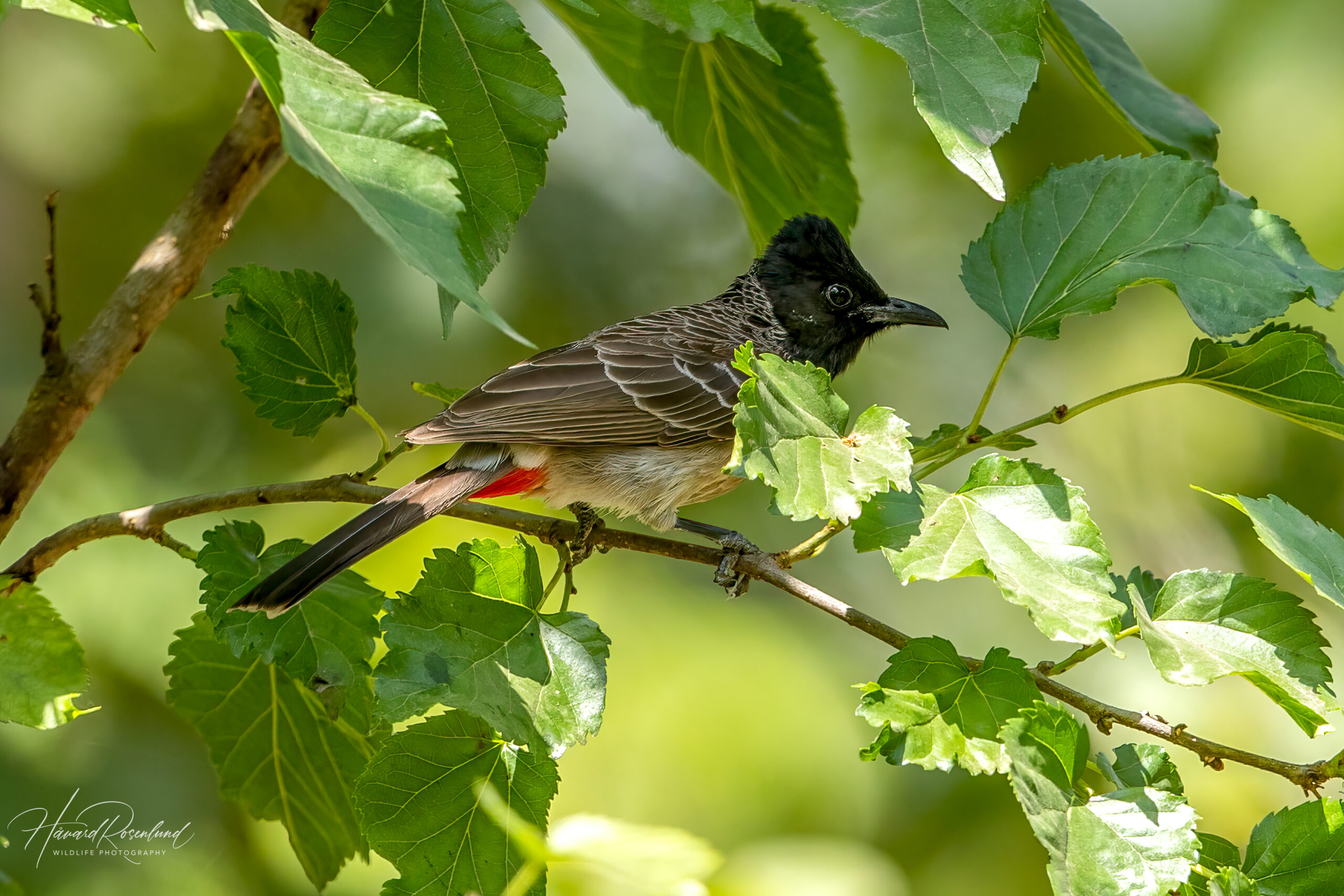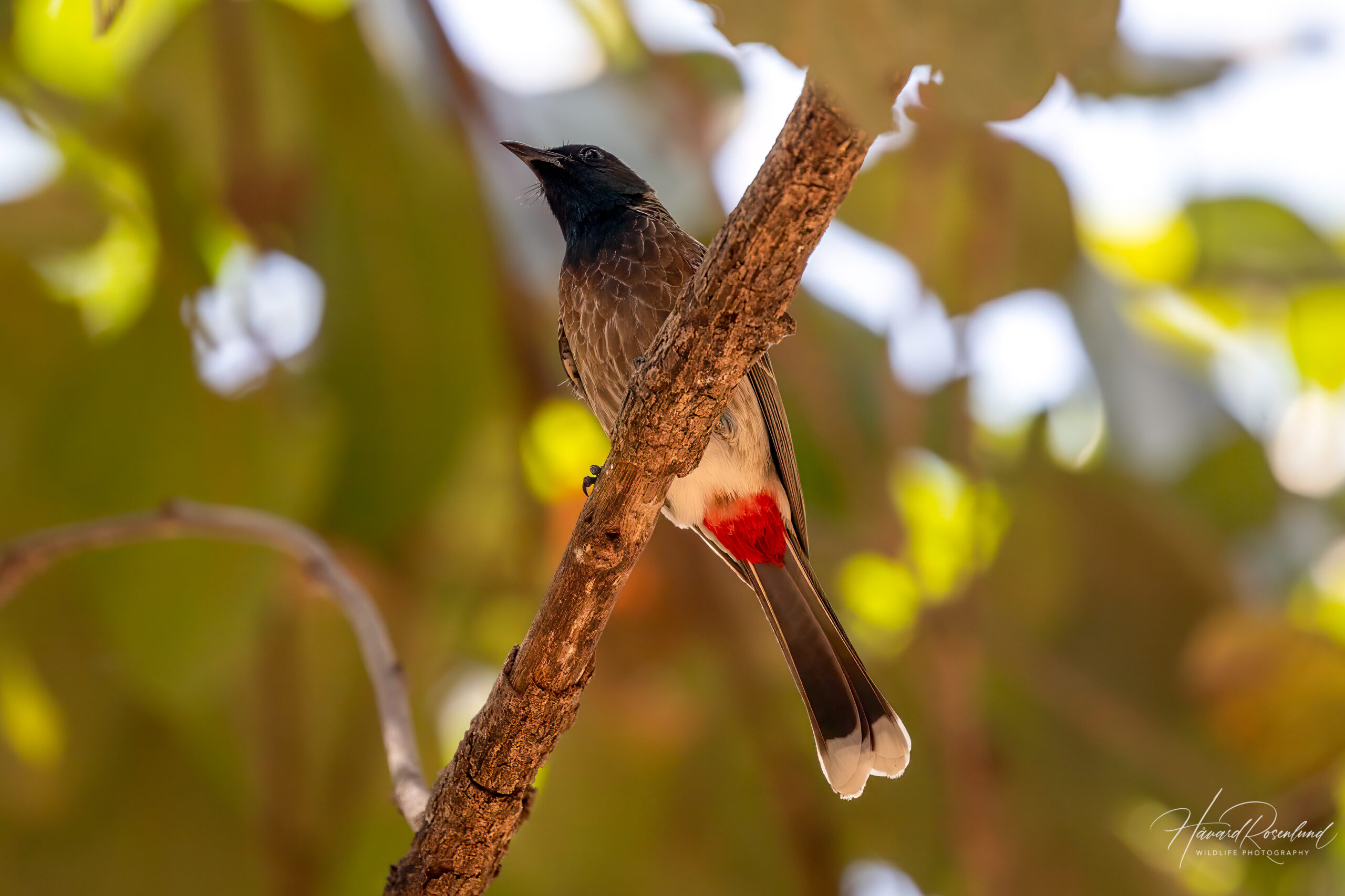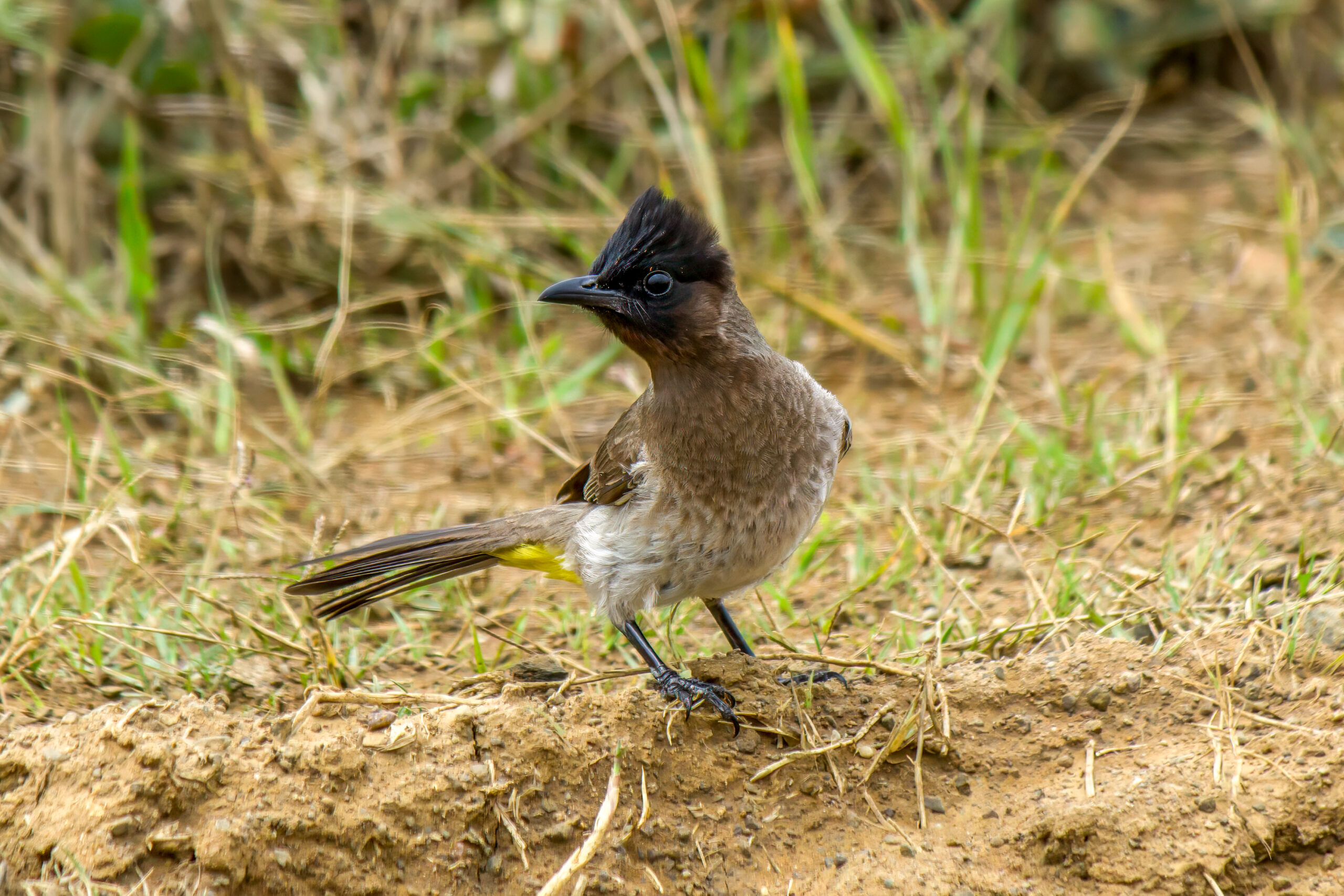Description
The red-vented bulbul (Pycnonotus cafer) is a medium-sized bird, measuring about 20 cm (7.9 in) in length, found across South Asia, with introduced populations in many parts of the world. It has a distinctive black head, white to light grey underparts, and a prominent crimson-red patch beneath the tail. Its upperparts are brownish with a slight green sheen. This bird is typically distinguished from similar bulbul species by its red vent and louder, more melodious calls. The red-vented bulbul is similar to the sooty-headed bulbul (Pycnonotus aurigaster), found in East and Southeast Asia, which can also have a red vent, but is typically more grey in coloration and has less black on the head.
Diet & habitat
Red-vented bulbuls are highly adaptable and can live in a variety of habitats, including urban areas, open forests, gardens, and agricultural lands. They primarily feed on fruits, petals, nectar, insects, and occasionally small vertebrates. This species exhibits a highly opportunistic feeding behavior, often foraging in small groups to exploit food sources.
Nesting
The breeding season varies by region but generally occurs during the spring and summer months. Red-vented bulbuls are monogamous and display territorial behavior during the nesting period. The nest is a small, cup-shaped structure made of twigs and leaves, placed in bushes or trees. Females lay 2 to 4 eggs per clutch, which are incubated for about 14 days. Fledglings leave the nest approximately 14 days after hatching but remain dependent on parental care for a few weeks more.
Introduced populations
The red-vented bulbul has been introduced to many regions outside its native range, including parts of the Pacific Islands, New Zealand, the United Arab Emirates, and the United States (specifically in Florida and Hawaii). These introductions have often been accidental, resulting from the escape of captive birds, but in some cases, they were deliberate, as people appreciated their song and aesthetic qualities.
In non-native regions, the red-vented bulbul is often considered an invasive species due to its potential to compete with native bird species for resources such as food and nesting sites. Additionally, this bird has a broad diet that allows it to feed on a variety of fruits and seeds, leading to concerns about its role in dispersing invasive plant species. In agricultural areas, red-vented bulbuls can become pests, damaging crops and fruit productions.
The presence of introduced populations of red-vented bulbuls has raised ecological concerns, particularly in island ecosystems where native birds and plants have evolved without the presence of such generalist competitors and predators. Their adaptability and generalist lifestyle mean that once established, red-vented bulbuls can be challenging to manage or eradicate, prompting the need for ongoing monitoring and management efforts to mitigate their impact on native ecosystems.
Status
Because of its wide distribution and large population, the red-vented bulbul is classified as least concern on the IUCN Red List. In areas where it has been introduced, it is often considered a pest species due to its impact on native bird populations and agriculture. It is listed as one of the top 100 worst invasive species.







